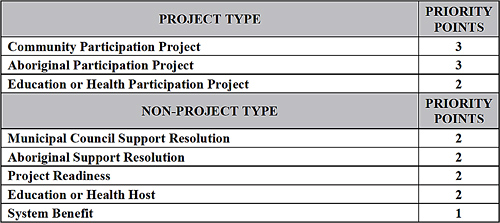Ontario’s Feed-in Tariff Program (“FIT Program”) has been under review since last fall. The results and Government’s ensuing decisions are coming to fruition. On March 22, 2012, the Ontario Government released the results of its review (“FIT Review”) of the FIT Program which revealed several recommendations for program changes. The Government crystallized its direction when the Minister of Energy issued, on April 5, 2012, a direction (“Minister’s Direction”) to the Ontario Power Authority (“OPA”) to continue the FIT Program (and microFIT) in a manner consistent with policies set out in the Minister’s Direction. The OPA responded immediately with drafts of proposed new FIT Program rules (“FIT 2.0 Rules”) and contract (“FIT 2.0 Contract”).
THE NEW RULES: Is it the same game?
A developer can expect greater challenges to obtain a FIT 2.0 Contract under the new rules, which provide for application windows, procurement limits and a complicated priority ranking system.
PRICING: Do we still want to play?
The draft FIT 2.0 Rules introduce a new price schedule which, as expected, reduces the prices paid for wind and solar. The pricing for other technologies remains unchanged. Price adders for Aboriginal and community projects have been maintained where the economic interest of Aboriginal and community participants exceed 15% (formerly the minimum was 10%). The draft FIT 2.0 Rules include new definitions and provisions relating to Aboriginal and community projects which will require careful review when structuring such projects.
The Minister’s Direction also stipulates that price schedules and inflation escalators will be reviewed and updated annually in November to take effect as of January 1.
In a significant departure from the existing FIT Program, an applicant offered a FIT 2.0 Contract will be offered the pricing in effect when the contract offer is made, not the price in effect when the application was filed.
The provisions of Exhibit B dealing with payment of compensation when certain projects have been curtailed have been deleted – a note to draft states that a provision will be inserted in conjunction with developments in the SE-91 Renewable Integration Initiative of the Independent Electricity System Operator.
A NEW PRIORITY POINTS SYSTEM: How you win.
The proposed FIT 2.0 Rules include a system of priority rankings based on the significant involvement of groups not historically in the business of generating electricity – community, Aboriginal and public sector groups. A new priority points system clearly assigns priority to projects that have a community, Aboriginal or municipal, education or health (“MUSH” sector) component, whether as a direct participant in the project or as supporting entity. The rules, by design, make it very challenging for a developer to obtain points in these categories.
Of the seven categories of points set out in the priority points table below, only two categories do not require some type of community, Aboriginal or MUSH sector involvement. One point may be awarded for the somewhat misnamed category of “system benefit”, a point for fuel type that is unavailable to wind and solar projects. Two points may be awarded for “project readiness” which is narrowly defined in relation to access rights, but as most serious applicants should be able to meet this requirement, it is unlikely that an applicant will gain significant competitive advantage through this category.
PRIORITY POINTS TABLE

The rules do not permit a project to obtain more than one type of participation project points but do permit certain combinations of project and non-project type points under certain circumstances. The proposed rules are complex and necessary clarifications would be welcome in the final versions. That said, the rules to obtain participation points are not likely to change significantly in concept.
PROJECT ELIGIBILITY: Can I even still play?
A number of changes have been made to eligibility requirements, some of which affect specific renewable fuels. For example, ground-mount PV projects may not be located on property that include Class 1, 2 or 3 lands, or organic and specialty crop lands. Ground-mount solar PV projects may also not be located on or adjacent to residential lands nor on commercial and industrials property if it is the primary use of such property. Solar projects cannot exceed 10 MW and cannot utilize inverters and panels which have manufacturer’s capacity ratings which exceed 120% of the proposed contract capacity. Waterpower projects continue to be limited to a maximum of 50 MW. Incremental and behind-the-meter projects are no longer allowed. There are also specific provisions for co-locating projects and limitations on developers submitting similar projects during the same application period.
A key amendment requires a proposed project to be located within a certain distance from the facility’s contemplated connection point. The FIT 2.0 Rules do not yet specify this connection distance, but large FIT projects are more likely to be affected by an unduly short connection distance.
The FIT 2.0 Contract maintains domestic content requirements, set at 50% for wind and 60% for solar facilities.
CONNECTION MATTERS: What it all boils down to…
The FIT 2.0 Rules no longer include the infamous Economic Connection Test (“ECT”). Although the existing ECT list will be terminated, connection availability continues to be, as expected, a critical factor. What this means practically is that applications will first be ranked in accordance with the priority points system describe above. Then, applications will be assessed, in order of rank, as to whether there is available transmission and/ or distribution capacity, as applicable. The FIT 2.0 Rules urge applicants to consult with the applicable transmitter or distributor prior to submitting an application but the OPA reserves its discretion to determine whether an application can pass the applicable transmission or distribution availability test.
GAME TIME: When, exactly, does the new game start? How many can play?
Unlike the initial open-endedness of the FIT Program, the issuance of contracts will now be subject to periodic procurement limits set by the OPA in its discretion.
In addition, the OPA intends to announce application periods during which applications may be submitted. The OPA may also determine the type of FIT Project that may be the subject of a particular application submitted during an application period.
While the timing of the first application period and procurement limits have not yet been determined, we can anticipate early calls for 50 MW of microFIT and 200 MW of small FIT projects (less than 500 kW) as a result of the Minister’s Direction. In addition, emphasis will be placed on projects (small and large FIT) with greater than or equal to 50% community and Aboriginal equity participation and on hydroelectric projects.
TRANSITION: What of applications previously in the queue?
Applications that were submitted prior to April 5, 2012 will be subject to the new FIT 2.0 Rules and pricing. An applicant may resubmit a pre-existing application during an application period and will be able to maintain its original time stamp. The subject project of a resubmitted application must be located on the same site, and the applicant must be the same person except that a change in ownership is permitted for the purpose of qualifying the project as a participation project. If a pre-existing application is not resubmitted during the first application period for the applicable project size, the pre-existing application will automatically be terminated.
Existing FIT Contracts are not affected by the new rules. However, the OPA is offering those who hold existing FIT Contracts the opportunity to terminate those contracts and receive back the application security without being subjected to any penalty.
WHAT ABOUT THAT CONTRACT?
The proposed form of FIT 2.0 Contract contains a number of substantive changes that should be carefully considered by a developer and its proposed financers. New provisions provide the OPA with the right to terminate for convenience and issue stop work orders. In addition, liquidated damages may be imposed without any ability to extend the term to the full 20 years after actual COD. Supplier representations have been enhanced and the parameters to invoke a force majeure claim tightened. And new events of default have been introduced that relate to the priority project categories.
THE FINAL WORD, FOR NOW
The comment period on the draft rules and contract closed on April 27, 2012. Finalized versions were expected on May 7 but as of the date of writing remain under consideration by the OPA.
The Government has clearly communicated that it supports the continuation of the FIT Program. But the proposed changes may pose new challenges for project developers and their financers. Industry participants suggest that the new pricing works for knowledgeable developers. The ability to obtain significant priority ranking will be a challenge given the complicated structures and requirements relating to the associated participation groups. And all of this is in the necessary backdrop of connection availability and a new form of contract that is significantly tougher on suppliers.
Time will tell whether the new program can sustain the same level of activity as in the first two years of the FIT Program. Of course, the intention may very well be that it not.
About the Author

Bernadette Corpuz is a Senior Associate in the Electricity Markets Group of the law firm Borden Ladner Gervais LLP (BLG). As a member of the Electricity Markets Group, Bernadette advises a wide range of energy market participants, including distributors, transmitters, generators, and commercial users with respect to a variety of commercial and corporate transactions related matters, including mergers and acquisitions, financing and energy markets. You can reach Bernadette at BCorpuz@blg.com.







